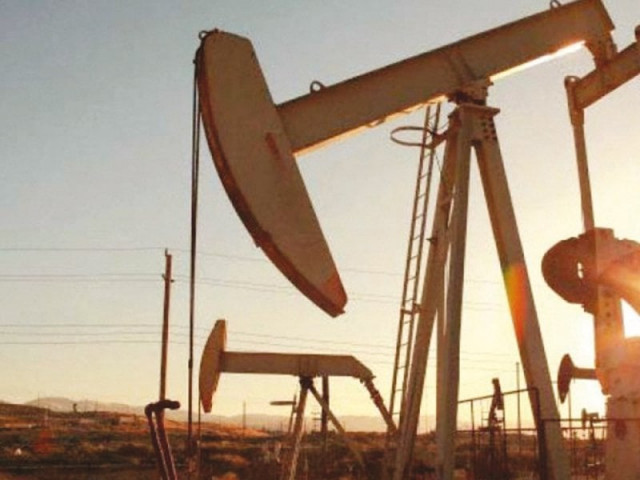
In Pakistan, purchasing power is so low that even low prices are not affordable, while governments want to extract as much from oil as it can.
Oil and energy in general play a major role in people’s lives and economies, never before this role was as paramount as it is today. People cooked their food on wood and shrubs, as they still do in most of Pakistan’s rural areas. The tradable energy is what is new and that is why energy prices are so important and what these would be in future.
'Sindh can make the entire country self-sufficient in energy'
Oil’s dominance can be gauged from the fact that seven of the largest 10 multinationals are oil companies - Royal Dutch Shell being the largest at $275 billion in sales and revenue.
The two super powers are among the largest oil producers, and one (the US) is the largest importer and consumer of oil at one-fifth of all.
Oil, gas, coal and electricity and to some extent renewable energy are the major elements in the energy mix of today. Prices are generally interdependent as one affects the other due to substitution effects and others. Oil prices being the most powerful driver would dominate our discussion.
Oil price movements
Oil prices skyrocketed to $145 per barrel in 2008. They levelled out to around $100 in 2014, plummeted to a 13-year low in January 2016 at around $28 and then doubled to current levels of around $50.
If shale oil producers go out of business and Iran doesn’t produce what it says it could, prices could return to their historical levels of $70-100. OPEC is counting on it. So what would be the prices in 2020 and 2030?
It is easier and plausible to talk of energy prices in the long term than short term, which is based on pure speculation. Consumer and producer behaviours and aspirations determine the balance, which determines prices.
Oil demand, as predicted by many credible international institutions, will continue to grow at least till 2035 and the supply would catch up accordingly.
Oil supply has been constantly increasing since 2011 and will continue to do so. Shale oil and gas are a major threat to OPEC producers and have brought prices to the level that they are today. Otherwise, the prices would have been in the range of $70-100 per barrel.
Higher prices may not always be in producers’ interest. Demand may go down – the biggest weapon in the hand of consumers to fight prices is to reduce or avoid consumption.
It has happened many times in the past. That is why Saudis do not want to press for excessive prices that may boomerang to destructively low prices.
Production cost
Cost of production does have a basic role in prices in the long run, although in the short run, the role of demand and supply plays a higher role. In the long run, prices would asymptote (approximate) with the cost of production.
But the cost of production in most countries is $20-25 per barrel. Why aren’t producers satisfied with the current prices then? There is an interesting feature that is break-even prices.
Current account gap to widen faster with oil price increase
Lightly speaking, I would term break-even prices to be the feel-happy prices. At these levels, the producer meets his cash flow requirements and is able to cover all extra cost and overheads over and above the direct production cost.
Libya would require an oil price of $200 per barrel to meet its budgetary requirement and thus it would like to have oil price to be that much. But it won’t, how can it be.
But if Saudis and Russians say that they would require $100 per barrel to balance their budgets, it is important. They may not get it all, but this requirement would certainly influence the prices.
The producer-consumer USA brings its shale resources into the market and Europeans bring in renewable energy and conservation to balance.
Then there are break-even prices of major oil companies such as Shell, Exxon and others. These prices of large companies used to be around $75-80 per barrel in 2014 as opposed to the production cost of $20-25 that we have been talking throughout.
They have cut corners and have managed to bring prices down to around $40. No company would be able to borrow funds, if it is not able to prove that it would have its long-term break-even price under $40.
With this perspective, let us turn to the forecast of US Energy Information Administration (EIA). They have predicted a price of $92 per barrel in 2025 at constant prices of 2015 (excluding general inflation) and nominal prices of $112 per barrel (including general inflation). This is their reference or base case forecast.
At constant prices, oil prices are predicted to grow 3.9% per annum and at nominal prices at 6.1% per annum, a bit on the higher side for my taste and understanding.
In the next 10 years, my assessment is that prices should remain under $100 with a bottom of $70.
Gas price
Oil producers do not make a difference in oil or gas in terms of their production cost assessments. Gas prices corresponding to the $20-25 per barrel, are $3.63-4.54 per million British thermal units (mmbtu).
Gas prices have varied widely in the three important market regions – the US, Europe and Asia – and the difference persists even now largely due to low shale prices and high supply in the US.
LNG has brought tradability and thus some uniformity in prices. Earlier, LNG prices used to be $16 per mmbtu in Asia and $8 in Europe. I never understood it and wonder as to why Japan tolerated it. Partly, transportation costs explain the difference.
Natural gas price predictions, as done by EIA, are for the US itself. US natural gas prices have been predicted to be in the range of $5-6 per mmbtu for 2025, as opposed to $2.62 currently. One may add $3 to cover liquefaction and transportation cost to Asia.
US prices will have a major effect on gas prices elsewhere in the future due to LNG factor and its tradability. LNG prices in the US have been predicted to grow at a rate of 2.5% per annum in constant prices and 4.77% per annum in current price terms, a substantial rate.
Oil prices to remain unchanged in May
It may be a sharp reminder to those who are arguing for a LNG-preponderant system in Pakistan.
Coal prices
Coal at mine-mouth is being sold at $1.69 per mmbtu or $30 per tonne. Coal prices, understandably, have been projected to grow at 0.5% per annum only in constant terms and 2.6% in nominal terms.
How do these compare with the current Thar coal prices estimates of $5.5 per mmbtu ($40-50 per tonne). A food for thought for those who would like to keep Thar coal attractive and thus competitive?
The writer has been member energy of the Planning Commission until recently
Published in The Express Tribune, May 1st, 2017.
Like Business on Facebook, follow @TribuneBiz on Twitter to stay informed and join in the conversation.


















COMMENTS
Comments are moderated and generally will be posted if they are on-topic and not abusive.
For more information, please see our Comments FAQ